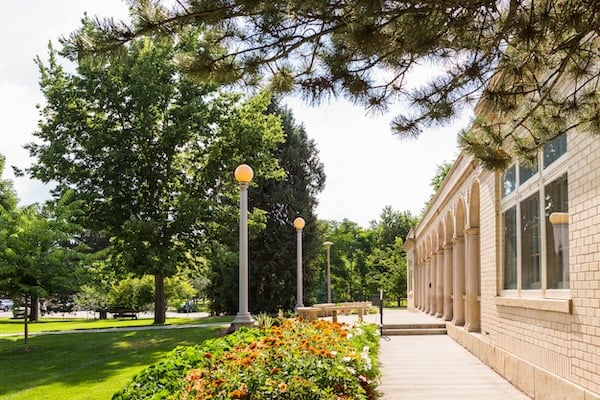Published on
Creating a Credit Mobility Culture: Three Small Ways to Create Momentum

Olivia needs to finish her bachelor’s degree to qualify for a promotion at work, but life is complicated. She does not know where to start or whether it is even feasible. She is a single mom raising two daughters and the primary caregiver for her ailing mother. Nevertheless, she is determined to show her girls they can do anything they put their minds to, no matter life’s challenges.
Olivia is looking for the fastest path to graduation, including credit for all her prior learning. Both time and money are tight, so she wants a program that prioritizes accessibility. With ten years of work experience and that management job in front of her, she does not want to start over or waste time on coursework that does not help her achieve her goals. A pre-evaluation of her prior coursework indicates that Olivia may be able to transfer 42 credits from the two institutions she attended previously.
She also learns she can get credit for the certification she completed at work, which may get her to 45 credits. Plus, she can use prior learning assessment to potentially earn more credit for her work and life experiences. Olivia holds back tears while talking to her enrollment representative: “I can’t believe it! This shows me that I haven’t been wasting my time and all the things I’ve done are actually worth something.”
According to a 2023 report, 40 million Americans have completed some college credit but have not earned a credential (Causey et al., 2023). When these individuals seek to return to school, myriad variables and life circumstances create challenges and barriers, likely making educational goals feel out of reach.
Among the questions for returning students to answer as they explore their options: Should I enroll at the same school or somewhere new? Do I want to enroll on campus or online, and what options are available to fit my schedule? Do I have time for this? Do I have the equipment and technology skills to be successful? Is my previous program still available, and is it still relevant to my current career goals? What will it cost, and how will I pay for it? Do I have to start over, or can I start where I left off?
If navigating the admissions process as an adult learner is not daunting enough, figuring out whether and how prior credits transfer and what it will take to finish a program can be overwhelming and frustrating. Solving these problems requires institutions to develop a credit mobility culture that prioritizes helping students like Oliva accomplish their educational goals while optimizing credit for all forms of prior learning.
In our white paper “Creating a Credit Mobility Culture: Supporting Transfer for Adult Learners with Some College and No Degree”, my colleagues and I define the critical components to prioritizing a credit mobility culture, including creating flexible policies and programs, embracing prior learning as a viable source of academic credit, providing clarity on transfer outcomes and options, removing barriers that impact student progression and empowering students through relevant support services. An intentional focus on supporting the modern adult learner, who may have prior learning from multiple sources, requires thinking outside the box to find creative solutions that meet student needs while supporting the institution’s mission.
For institutions, tackling the necessary changes to create a credit mobility culture may seem too tall an order. Given all the projects and innovations already happening on campus, how can you ask people to prioritize yet another critical initiative? After all, this one’s tentacles spread from admissions to the registrar’s office and from student services and advising to the faculty. While creating a credit mobility culture is indeed a broad and intensive effort, starting small will break the inertia, so you can get some wins and build momentum. Here are three suggestions for where to start.
Three Ways to Start Small
Review your policies and procedures
Consider which policies and procedures create pathways and opportunities for returning students with transfer credit and which create obstacles. “The Joint Statement on the Transfer and Award of Credit” (2021) provides comprehensive guidelines useful to ground your efforts in best practice. While a complete overhaul of all policies and procedures certainly is a massive effort, scanning current policies and procedures allows you to identify where to start. For example, if you find a policy or procedure that effectively creates pathways for students, find ways to lean into it, build awareness and use it as a model for new policies. Conversely, if you find a policy or procedure that creates barriers for these students, consider how you may be able to remove friction. Collect data to make your case for alternatives. Starting with one or two policies that have an impact will create an appetite to look for more wins!
Find a place to experiment with Credit for Prior Learning (CPL)
First, it is crucial to recognize why CPL is important to this population of learners with some college and no degree. When a student stops out, sometimes for a long period, both life and learning continue outside the classroom. Training, certifications and other professional development may translate to college-level learning, as may rich life experiences. Offering this student population a way to gain credit for prior learning from alternative sources acknowledges their experience and the learning that has occurred through these experiences, which is motivating. It allows them to accelerate their path to degree completion, saving both time and money. According to the CAEL and WICHE study “The PLA Boost”, “PLA is indeed associated with better student outcomes. These include higher credential completion, cost savings and time savings” (Klein-Collins et al., 2020, p. vii).
While some institutions already have policies in place for alternative forms of credit for prior learning, many institutions do not. Standing up a comprehensive solution to evaluate CPL may seem too big an effort when starting from scratch. Instead, identify a smaller, more focused opportunity to leverage CPL as a way to experiment and learn. Perhaps you have a program designed with flexibility for transfer credit where CPL options would fit well. Perhaps a specific dean at your institution in interested in exploring CPL options.
Starting small allows your institution to test the waters, measure outcomes and build the support systems needed before rolling out something across the enterprise. It also allows you to socialize the benefits and build support where skepticism exists. Even at scale, CPL options may not be suitable for every program, so learning more will help your institution determine how best to leverage CPL.
Is your institution already providing CPL options to students? Opportunities likely exist to improve or expand your current work. Here too, experimentation can help you build momentum. At University of Phoenix, analyzing our practices related to CPL opened the door to various opportunities to improve our already robust approach to CPL. For example, after identifying cost as the most significant barrier for students interested in using the PLA process to have prior learning evaluated for credit, we launched an experiment to validate our hypothesis that reducing fees would increase participation. By using data from our experiment and analyzing outcomes to support the case, we ultimately removed all fees associated with the PLA process for students to have prior learning evaluated at no cost. As a result, PLA participation went up by 36% in the 2022 academic year and 37% in 2023. This increase has allowed more students to save time and money while progressing toward their educational goals.
Find them where they are and tell them how to do it
Recently, I discovered videos on TikTok and other social media platforms giving viewers tips on finishing a degree as quickly as possible. These content creators are not sponsored by a particular institution. Rather, they believe they have cracked the code and want to share their secrets with others. While some of their guidance may be dubious, the need for this type of straightforward, practical, how-to information is clearly illustrated by the number of views these videos garner.
But why are there secrets to share and codes to crack when it comes to finding the fastest path to graduation? To support returning students with some college and no credential, making information accessible starts with understanding how and where to communicate with this population. In addition, demystifying the process and providing tips and support in plain language will help students find the most direct path in their journey to reach their goals. So, consider reaching out to students to find out what they wish they knew when they enrolled. Ask them what was hardest for them to understand. Seek their input about tips they have for students like them. Then create content that spills the tea—no secrets, just simple, practical steps to get it done!
A credit mobility culture is imperative to prepare for the future. Anyone following the higher ed literature has read about students with a portfolio of microcredentials in mobile wallets, shifting in-demand skills and employer expectations, and changing student demographics. All these visions for the future require institutions to do better when it comes to helping students finish what they started with a seamless transition between learning experiences—both inside and outside of the academy. With that future in mind, and to do right by those we serve, I encourage my colleagues to find small places to start building a credit mobility culture that helps students achieve their goals. People like Olivia—and 40 million more—need our help.
References
American Association of Collegiate Registrars and Admissions Officers (AACRAO), American Council on Education (ACE), & Council for Higher Education Accreditation (CHEA). (2021, December 15). Joint statement on the transfer and award of credit. https://www.acenet.edu/Documents/2021-Joint-Statement-Award-of-Credit.pdf
Causey, J., Gardner, A., Pevitz, A., Ryu, M., & Shapiro, D. (2023). Some College, No Credential Student Outcomes: Annual Progress Report — Academic Year 2021/22. Fourth in the Series “Some College, No Credential.” In National Student Clearinghouse. National Student Clearinghouse. https://nscresearchcenter.org/some-college-no-credential/
Klein-Collins, R., Taylor, J., Bishop, C., Bransberger, P., Lane, P., & Leibrandt, S. (2020, December). The PLA boost: Results from a 72-institution targeted study of prior learning assessment and Adult student outcomes. Council for Adult and Experiential Learning (CAEL) and Western Interstate Commission for Higher Education (WICHE). https://www.cael.org/hubfs/PLA%20Boost%20Report%20CAEL%20WICHE%20-%20October%202020.pdf



